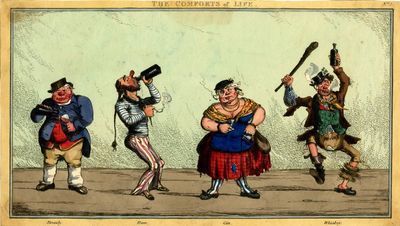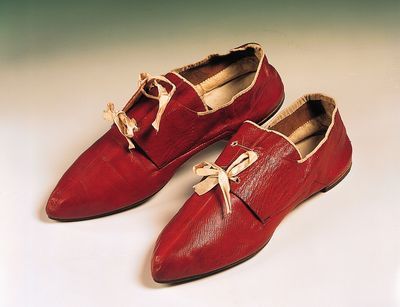The comforts of life and the dancing curator
By MICHAEL CAINES
I can't help but feel bemused by Georgians Revealed, the new exhibition at the British Library, and its emphasis on the affluence and the aspirations of the middle classes during the eighteenth century – not that this is all there is to it, or that what is on display there doesn't impress me a great deal. (And don't take this as an official TLS review, either; that's coming soon, from a much deeper expert in these matters than me.)
On the contrary: I'm glad that anyone who can get into the exhibition, which runs until March 11 next year, can now enjoy the privilege of seeing Jeremy Bentham's violin alongside designs by John Soane, a copy of Eliza Haywood's short-lived periodical The Tea-Table and the exquisite, colourful little volumes of The Infant's Library.
The last room, too, is a treat: a map of London you can walk across in a dozen paces (maybe half? sorry, I didn't count) covers the entire floor. That famous line of Samuel Johnson's, about a man who is tired of London being tired of life, adorns the wall; now you can see, if you didn't realize already, how much smaller was the London he had in mind than the current incarnation.
My bemusement has more to do with attending the press view on Thursday morning fresh from a reading of The First Bohemians by Vic Gatrell, which I reviewed for another paper. In that book, although the author is at pains not to misrepresent living conditions in London during more or less the same period covered by the exhibition, the aspirations, aristocratic pretensions and material wealth of well-to-do eighteenth-century Londoners are treated, I would say, with a certain degree of scepticism.
I must have picked up a little of that attitude. Many of the city's artists, Gatrell observes, lived in the environs of Covent Garden; paid to produce flattering, elegant visions of wealthy patrons, they could hardly have been blind to the deprivations of urban life, to scenes of violent crime, poverty, prostitution, chronic alcoholism, press-ganging and all the other not-so-pleasantries of the time.
I'm not saying that Georgians Revealed ignores deprivation and depravity altogether; it features the nineteenth-century illustration above, for example, as well as references to slavery. But its principal subject is middle-class materialism, and the complementary view of the world. You need to be a certain mood, or be a certain kind of person, to take unclouded pleasure in such displays. Here, Drury Lane is pleasantly free of human traffic, the countryside is bucolic, the teapot is mighty fine china (or something like it; most people couldn't afford the real thing), and one could seek to improve one's social standing by learning how to act proper, like, from the Earl of Chesterfield's letters to his illegitimate son Philip. William Hogarth and Thomas Rowlandson, key figures in Gatrell's history, barely figure here at all.
Instead, there is almost a whiggish version of history here, as summed up in the exhibition's subtitle: Life, style and the making of modern Britain. The last part of that subtitle is crucial. Here are the good things people enjoyed, or emulated, from around the world, thanks to a flourishing mercantile economy; here are innovations such as new forms of transport (the expansion of a network of usable roads being itself a basic improvement); and in the pair of Georgian men's shoes (below) on loan from Northampton Museum, I suppose we have the remains of some popinjay ancestor of today's egregious red trouser brigade.
Thanks to Professor Gatrell, I couldn't help but wander through the exhibition with some less-than-stylish visions of eighteenth-century life coming to mind. I'll have to wander through it again after brushing up on my Chesterfield.
Never mind: you don't even need to go to the BL to see Moira Goff, the world's first dancing curator, introducing the exhibition.
Peter Stothard's Blog
- Peter Stothard's profile
- 30 followers





